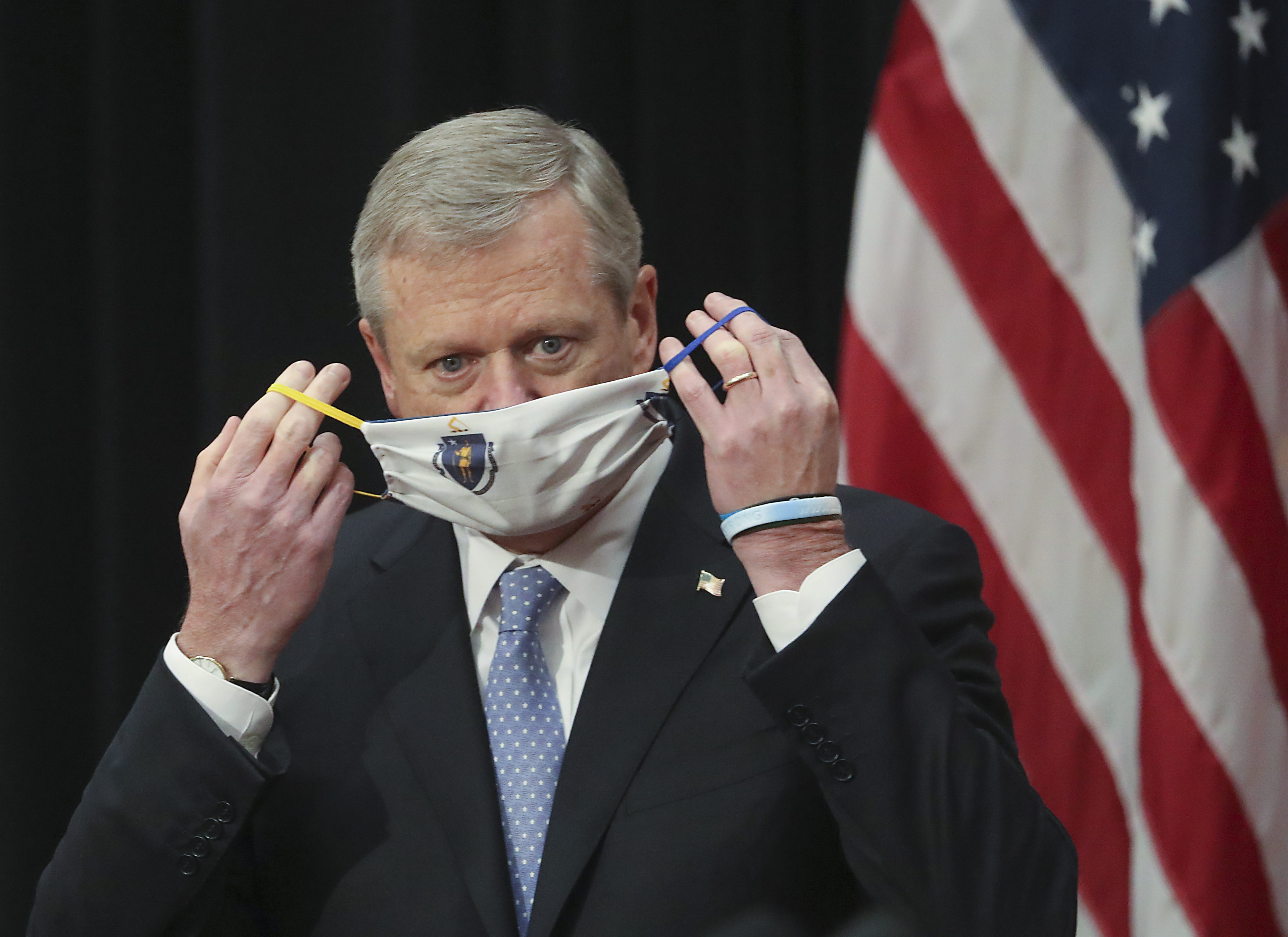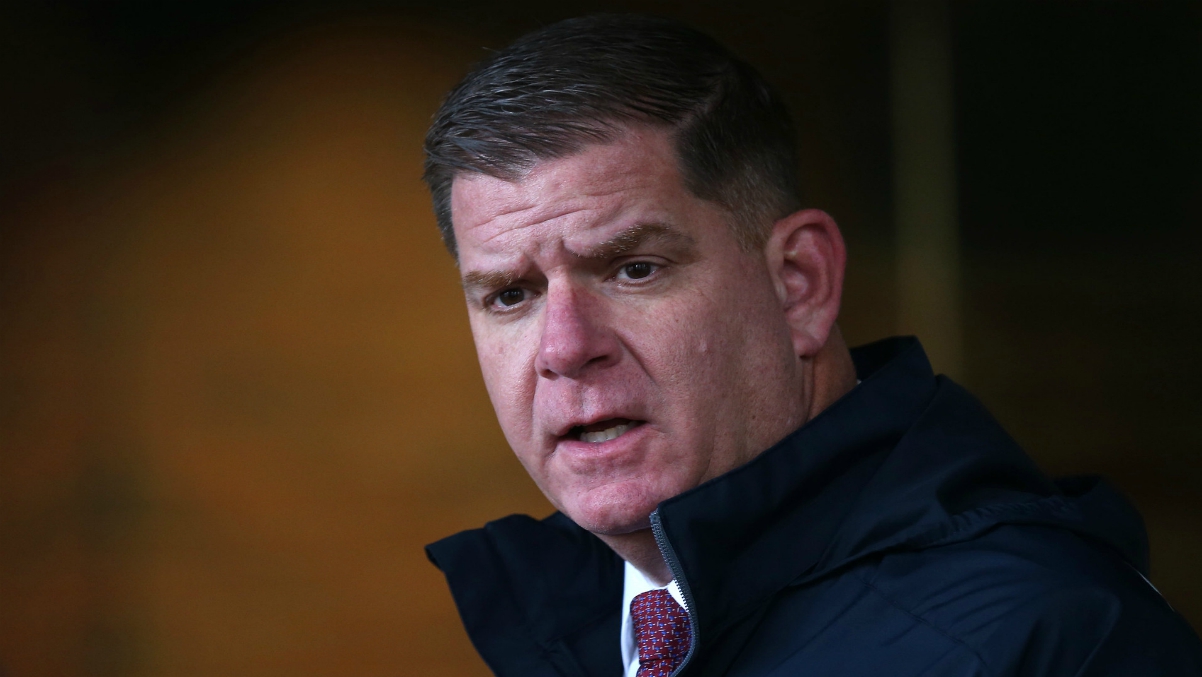An increase in the number of COVID-19 cases could force Massachusetts to once again open field hospitals to care for a possible overflow of patients as hospital intensive care units fill up, Gov. Charlie Baker warned Tuesday.
Hospitals are also prepared to make an additional 400 beds available for COVID-19 patients by converting acute care beds to ICU beds to deal with an expected rise in cases of the disease caused by the coronavirus during the fall and winter, Baker said at a news conference.
"The trends obviously are going in the wrong direction and show no signs of changing," he said.
Get Boston local news, weather forecasts, lifestyle and entertainment stories to your inbox. Sign up for NBC Boston’s newsletters.
When and where field hospitals might be set up depends on space and need, Baker said. His administration will provide details about field hospitals later this week.
"We hope we won't need to use many of those additional resources," Baker said.
Massachusetts residents had done a good job controlling the virus after an initial spike in the spring, but are getting careless and allowing the virus to get a toehold again, leading to a second surge, he said.
"When it comes down to it, controlling this virus depends in many ways on the everyday actions of everybody," Baker said. "COVID is merciless and will continue to grow and spread whenever it is given the opportunity."
Statistics released by the state later Tuesday showed 618 individuals with confirmed cases of COVID-19 were hospitalized, up 30 from the day before. There were 143 people in intensive care units, also a slight increase.
The state has also submitted a vaccine distribution plan to the federal government once a vaccine is made available, Baker said.
He faulted what he described as a leadership vacuum in the federal government at a time when cases are surging across the nation.
"We are in a very critical moment with respect to this nation's response to this virus and there isn't guidance, direction or a consistent message coming from D.C.," he said.
He also tore into the Trump administration's refusal to concede that Joe Biden was elected, given how critical a coordinated government response is to adequately responding to the virus.
Last week, the Baker administration rolled out changes to its color-coded coronavirus risk data, shifting many communities out of the state's highest-risk "red zone."
The changes led to a steep drop in the number of municipalities designated as "red," from 121 to 16. Designation in the red category impacts a community's ability to progress in the state's phased reopening plan and to offer in-person learning at schools.
The remarks also come as Massachusetts sees a spike in COVID-19 cases. The state reported 1,184 new confirmed coronavirus cases Monday and an additional 13 deaths.
There have now been 9,936 confirmed deaths and 167,929 cases, according to the Massachusetts Department of Public Health. Another 227 deaths are considered probably linked to COVID-19.
Among the changes announced last week, the Department of Public Health is no longer including a map in the weekly report. An official said that the map is no longer seen as being as helpful as it once was, now that coronavirus cases are being seen in most communities.
The other major change is that the risk assessment will now factor in population size.
Previously, the state used the number of cases detected on average each day over two weeks to determine if Massachusetts' communities are at high risk for coronavirus transmission.
Now, to qualify for the red category under the new metrics, communities with populations under 10,000 must have more than 25 cases. For mid-size communities of between 10,000 and 50,000 people, they must have an average of more than 10 cases per 100,000 people and a positive test rate of more than 5%. And for larger communities of greater than 50,000 people, they must have more than 10 cases per 100,000 people and a positive test rate of more than 4%.
Along with the changes to the risk assessment, the Baker administration said last week all communities in the gray, green and yellow COVID risk categories are expected to have students learning in-person, and even those in the highest-risk red category should consider a hybrid model instead of going fully remote, state officials said Friday.
All school districts will now be expected to prioritize in-person learning across all color-coded categories unless there is suspected in-school transmission, Secretary of Education James Peyser said.
Schools in the red should consider a hybrid model instead of going fully remote, he said, with a particular focus on getting the highest need students back in the classroom.
Last week there were 121 communities in the highest-risk red zone; this week's list, which factors in population, has 105 fewer cities and towns there. (See detailed lists below.)
Boston, Worcester and Cambridge are among the many communities no longer in the red. And no communities that have consistently been in red are listed in the report as being required to move back to Phase 3, Step 1 of the Massachusetts reopening plan.
The town-by-town data was released Friday, after initially being scheduled for release Thursday. The Massachusetts Department of Public Health announced the delay Thursday afternoon without initially offering an explaining.
The following communities are in the highest risk level as of Friday: Brockton, Chelsea, Everett, Fall River, Fitchburg, Lawrence, Lowell, Lynn, Methuen, New Bedford, Norfolk, Revere, Seekonk, Somerset, Springfield and Westport.
Norfolk is the only community that's newly red on the list. It was grey in last week's report.
More than 100 communities dropped off the red list: Abington, Acushnet, Agawam, Ashland, Athol, Attleboro, Avon, Bedford, Bellingham, Berkley, Beverly, Billerica, Blandford, Bolton, Boston, Boxford, Braintree, Bridgewater, Brimfield, Buckland, Canton, Chelmsford, Chicopee, Clinton, Cohasset, Danvers, Dartmouth, Dedham, Dighton, Dover, Dracut, East Bridgewater, East Longmeadow, Fairhaven, Foxborough, Framingham, Freetown, Gardner, Georgetown, Gloucester, Granby, Hanover, Hanson, Haverhill, Hingham, Holliston, Holyoke, Hubbardston, Hudson, Kingston, Lakeville, Leicester, Leominster, Littleton, Lynnfield, Malden, Mansfield, Marlborough, Marshfield, Medford, Mendon, Middleton, Milford, Nahant, Nantucket, Newburyport, North Andover, North Attleborough, Northborough, Norton, Norwood, Palmer, Peabody, Pembroke, Plymouth, Randolph, Raynham, Rochester, Rockland, Salisbury, Saugus, Shrewsbury, Southborough, Swansea, Taunton, Tewksbury, Townsend, Tyngsborough, Wakefield, Waltham, Wareham, Webster, West Boylston, West Bridgewater, West Springfield, Westborough, Westfield, Westwood, Weymouth, Whitman, Wilmington, Winchester, Winthrop, Woburn, Worcester and Wrentham.



